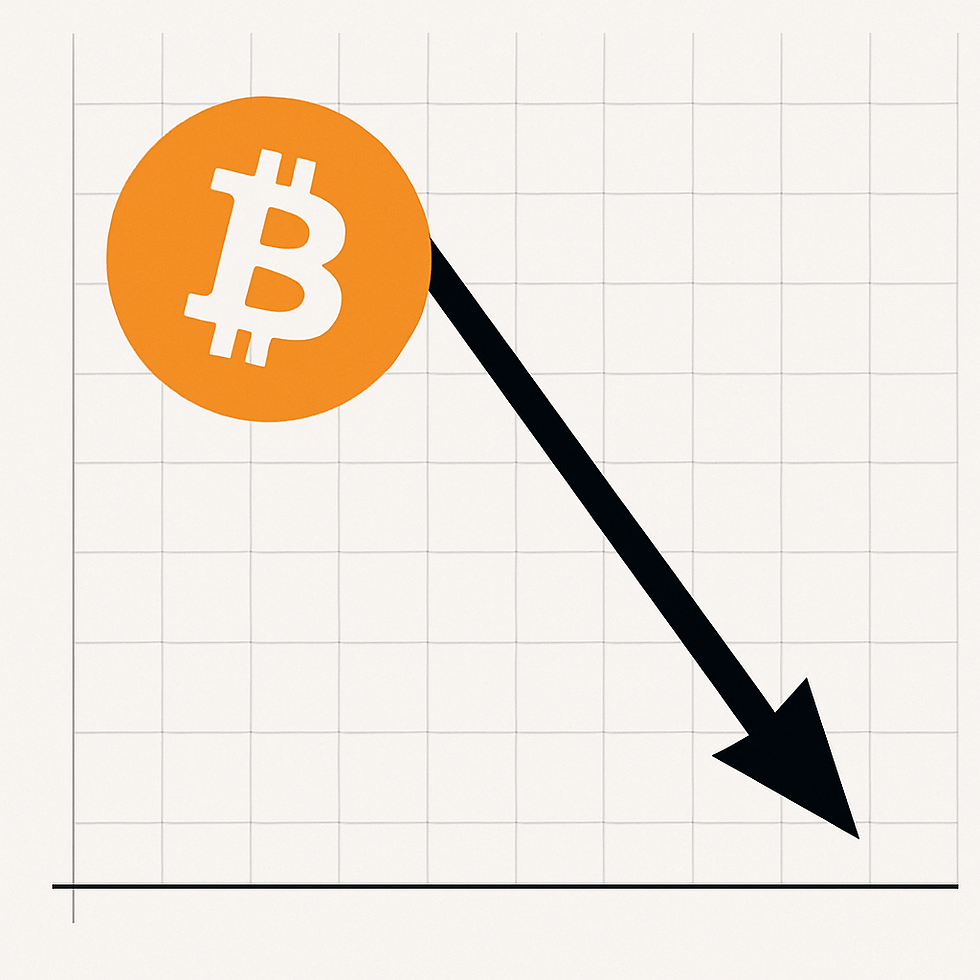The End of the Code: Why Bitcoin's Days Are Numbered
- WireNews

- May 10
- 3 min read
by Ram ben Ze’ev

We live in a world of illusions—comforting, profitable, fleeting illusions. Perhaps no illusion has been more seductive than the one peddled by cryptocurrency advocates: that Bitcoin, Ethereum, and the entire constellation of decentralised tokens are invincible, incorruptible, and infallibly secure. But just beneath the glossy surface of digital charts and bullish headlines lies a threat so monumental that most refuse to acknowledge it.
That threat is not theoretical. It’s here.
Google, and others like it, have now breached the threshold of quantum supremacy. A term that may sound academic to the average investor but represents the death knell of cryptography as we know it. In short: Quantum computing can, and eventually will, break the cryptographic foundations that secure all cryptocurrencies—in minutes, not years.
Let’s not be coy. Bitcoin is not backed by gold. It is not regulated by any sovereign. It is not tied to production, consumption, or any tangible utility. It is code—and nothing more. And that code is protected by algorithms like SHA-256 and ECDSA, both of which were designed to be resistant to classical computing, not quantum.
Enter Shor’s Algorithm—a quantum-based method that can reverse-engineer the private key of a Bitcoin wallet from its public key. Every single Bitcoin wallet that has made a transaction has already revealed its public key. In the presence of a capable quantum machine, these wallets are no more secure than a suitcase with a three-digit combination lock.
But there is more. Much more.
While quantum computing provides the weapon, AI provides the assassin. Modern artificial intelligence doesn’t just follow instructions—it learns, adapts, and predicts. An AI system fed enough blockchain data can:
Identify vulnerable wallets in real time;
Coordinate targeted attacks based on value, transaction frequency, and even geopolitical signals;
Exploit DeFi protocols and smart contracts;
Simulate human interaction to deceive exchanges, custodians, and automated systems.
Together, AI and quantum computing form the ultimate adversary—relentless, tireless, and without morality. No human trader or developer can keep pace with this fusion. And yet, the investing public, led by institutional strategies and trend-followers, continues to pour billions into these markets with eyes wide shut.
This is where the warning becomes personal.
Investors, take note. This is not just a threat to the digital tokens themselves—it’s a threat to every financial instrument that derives its value or strategy from cryptocurrency performance:
Crypto hedge funds and "Strategy" platforms that claim to outperform Bitcoin are still tied to it;
Tokenised securities and synthetic assets built on smart contracts are inherently fragile;
Even ETF-like crypto products that appear diversified are sitting on the same foundation—crumbling code.
Once the illusion breaks—when wallets are emptied and exchanges hacked by untraceable, quantum-level operations—confidence will not erode gradually. It will collapse overnight.
Do you think governments will backstop the losses? They won’t.
Do you believe there will be a hard fork that saves Bitcoin? There can’t be—because by then, no one will trust any version of it.
Do you imagine that your fund manager is prepared for this? They aren’t. Ask them what post-quantum transition protocol they have in place. You’ll hear silence.
We are approaching a digital Yom HaDin—a Day of Judgment for crypto markets. And as is often the case, the writing is on the wall, but only the wise will see it.
Now is the time to get out. Not next week. Not after the next halving. Not after one more bull run. The mathematics do not lie, and the machines do not sleep.
Exit the illusion while you still can.
>>>> BUY ME A COFFEE <<<<
###
Bill White (Ram ben Ze'ev) is CEO of WireNews Limited, Mayside Partners Limited, MEADHANAN Agency, Kestrel Assets Limited, SpudsToGo Limited and Executive Director of Hebrew Synagogue








